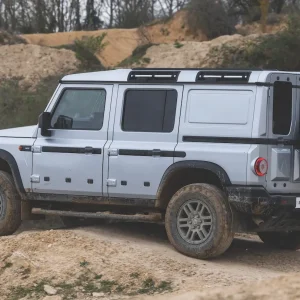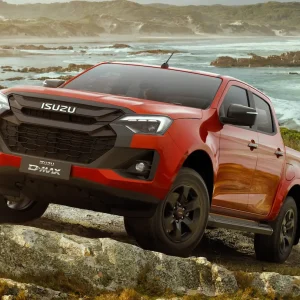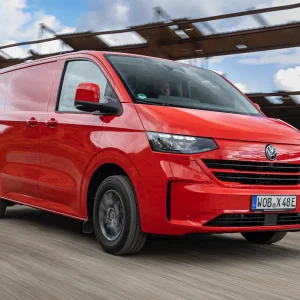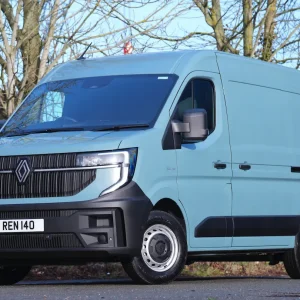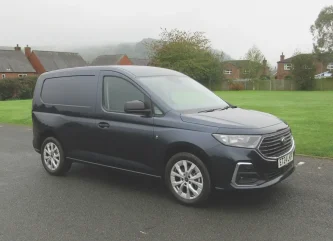
It is the little things that give the game away as much as the big ones; the user-unfriendly slider controls for the in-cab heater and radio volume on the dashboard for instance, and the VW-badged components under the bonnet. They serve to emphasise that Ford’s new Transit Connect is a rebadged version of troubled Volkswagen’s latest Caddy as a consequence of a major joint venture between the two manufacturers.
Rolling out the front-wheel-drive Connect has posed Ford with a bit of a problem, however. The short-wheelbase version is almost the same size as the Transit Courier, so the big blue oval has tried to put as much distance between the stablemates as possible.
The Courier is available in petrol, diesel and battery-electric guise. The Connect, however, is sold as a diesel and as a petrol plug-in hybrid and – unlike the Courier – you can order it with all-wheel-drive.
Furthermore, you get the choice of either short- or long-wheelbase. The former comes with a 3.1m3 load area, the latter offers 3.7m3.
The Courier is short-wheelbase only, with a 2.9m3 cargo bay.
The Connect’s 2.0-litre diesel is on offer at 102hp with a six-speed manual gearbox. The 122hp version listed as the alternative is up for grabs with the same box if you opt for all-wheel-drive, or with a seven-speed dual-clutch automatic transmission if you remain with front-wheel-drive.
The 1.5-litre 150hp plug-in hybrid is automatic only.
Specifications are either Trend or Limited, but mention should also be made of the Active FlexCab; an impressively-flexible crew cab. With a clever moveable bulkhead it allows you to switch between one and two rows of seats easily depending on how much cargo you want to carry.
On the road
We got to grips with a short-wheelbase 122hp diesel van equipped with the automatic box and in Limited trim; and we were mightily impressed by its on-the-road get-up-and-go.
Acceleration is strong, overtaking slower-moving traffic is a breeze, and with 320Nm of torque to play with, the engine just keeps on giving.
The transmission comes with an S for Sport setting which means it changes up later and down earlier, but there seems little point in resorting to it given that the performance delivered by the standard setting is so meaty. No matter which setting you choose, the power is delivered smoothly, with no jerkiness or hesitation.
You can switch to manual transmission and go up and down the gears using steering-mounted paddles. We doubt many drivers will bother given that the automatic box is so good.
The Connect handles well and delivers a firm, but seldom uncomfortable, ride. As with so many light commercials, however, in-cab noise levels are too high, with the engine the biggest culprit.
Quoted combined fuel economy is 50.1mpg, but we were getting slightly less than that because we couldn’t resist exploiting the Connect’s performance in our usual leaden-footed way. Our test van sat on 17in alloy wheels shod with Hankook Ventus Prime 215/55 R17 tyres.
Loading and interior
Access to the load bay is by means of twin rear doors plus a sliding nearside door. Six load tie-down points are fitted along with a plastic (we’d rather have steel, despite the extra weight) full-height bulkhead.
The cargo bed is protected by a tailored plastic cover and an assortment of panels partially protect the doors against scratches and scrapes to half their height, but there is no protection for the slim wheel-boxes.
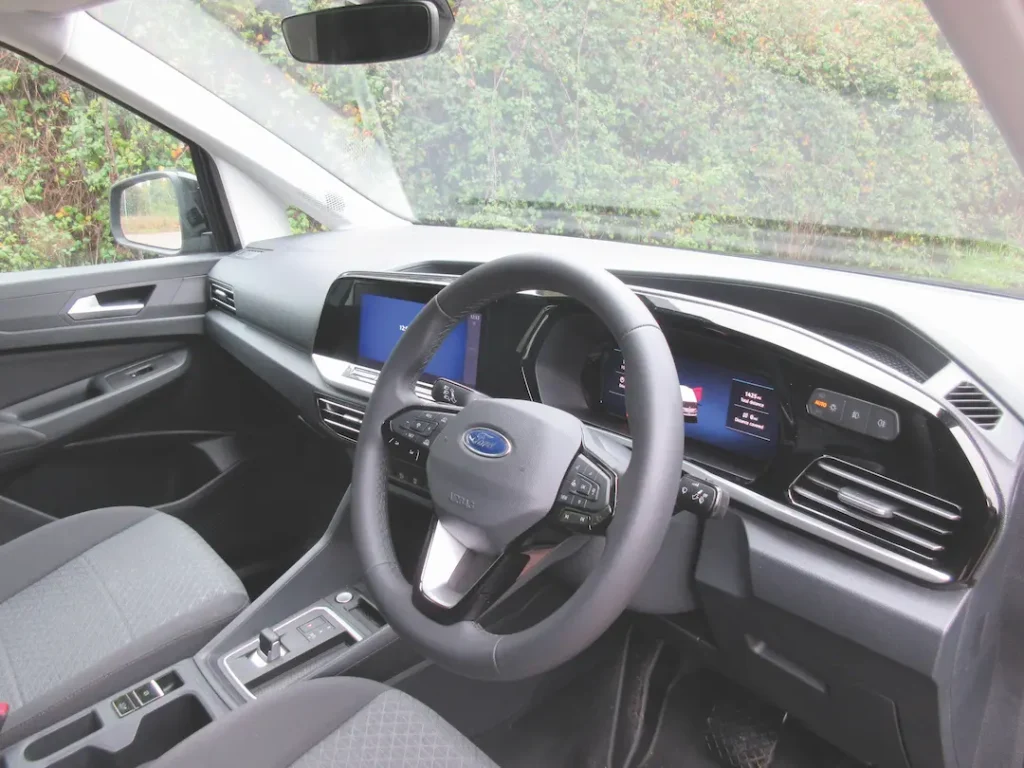
Opt for Limited, and the list of kit encompasses air-conditioning, a user-friendly satellite navigation system, a reversing camera with front and rear parking aids, a DAB radio, Bluetooth connectivity, Android Auto and Apple CarPlay. A 10in touchscreen controls most of the functions and is further complemented by a configurable 10.25in digital instrument cluster.
Keyless entry and ignition is fitted along with an electric parking brake. The dashboard boasts a pair of USB-C ports with up to 45W on tap, a 12v power socket and a wireless smartphone charging pad.
In-cab storage facilities include shelves above the windscreen and bins in each of the doors. Driver, passenger and side airbags are all present and correct.
Onboard safety systems include Blind Spot Assist with Cross Traffic Alert. The latter feature can be invaluable if you are in the unenviable position of having to reverse out of an entrance and onto a highway because it warns you if anything is coming.
Our demonstrator was equipped with a £450 optional Driver Assistance Pack which includes Intelligent Adaptive Cruise Control with Lane Centring, Lane Change Assist, Driver State Assist and Active Park Assist.
Optional, too, was the Midnight Blue metallic paint finish – an extra £600 – which extends to the door handles, mirror casings and bumpers.
As with all new Ford light commercials, great stress is laid on connectivity. A FordPass Connect modem is fitted which gives access to a variety of services.
It can for example communicate with the FordPass Pro smartphone app, which means among other things that you should always be able to pinpoint the whereabouts of your vehicle.
| Model | Ford Transit Connect SWB Limited 2.0-litre 122hp EcoBlue diesel 7spd auto |
| Price (ex VAT) | £27,000 |
| Price range (ex VAT) | £23,500-£33,050 |
| Insurance group | 29E |
| Warranty | 3yrs/100,000mls |
| Service intervals | 2yrs/20,000 mls |
| Load length | 1,797mm |
| Load width (min/max) | 1,230mm /1,628mm |
| Load bay height | 1,272mm |
| Gross payload | 737kg |
| Load volume | 3.1m3 |
| Braked trailer towing weight | 1,500kg |
| Engine size/power | 1,968cc/122hp @ 2,750-4,250rpm |
| Combined fuel economy | 50.1mpg |
| CO2 | 147g/km |
| On sale | September 2024 |
| Key rival | Renault Kangoo |
| Verdict | An impressive package with no lack of performance. |
| Score | 8/10 |

